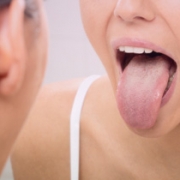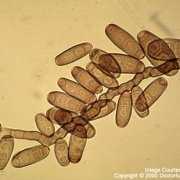Want to Kill Mold? Don’t Use Bleach!
Usually, when most homeowners notice mold, they get out the bottle of bleach thinking a few sprays will solve the problem. It’s no wonder. Most blogs, websites and publications continues to perpetuate the myth that spraying bleach will take care of your mold problem. Want to kill mold? Don’t use bleach!
Don’t Use Bleach!
Big bleach companies have promised that nothing else will do the job of removing mold as well as bleach. It’s great for disinfecting, but that doesn’t mean it kills mold. The moldy color looks like it’s gone, but within a short period of time, the mold comes back (and usually worse). As a matter of fact, the Occupational Safety and Health Administration (OSHA), stopped recommending the use of bleach for dealing with mold problems. And, the Environmental Protection Agency (EPA) updated their guide as well, removing the suggestion to use bleach to kill mold.
The problem is, it’s true that bleach can kill some mold in some places some of the time. But, bleach ONLY works to remove mold on hard, impermeable surfaces like bathtub and shower surrounds or tiles. However, on porous surfaces like drywall or hardwood floors, it won’t work to kill mold or keep it from coming back.
Why? Because mold spreads its roots (called mycelia and hyphae) deep into porous surfaces. Simply spraying a bleach solution on the surface won’t kill mold spores at their roots.
9 Reasons Why you should NOT to Use Bleach to Kill Mold
- First, bleach encourages toxic mold growth on porous surfaces because it provides excess moisture Bleach contains about 90% water. When you apply bleach to a surface, the chlorine quickly evaporates leaving behind a lot of water. Then, when the water soaks into porous surfaces like wood, it encourages mold growth. So, bleach can actually make your mold problem worse.
- Bleach only removes the color from mold. After you spray bleach, only the surface appears clean. But the problem is, the mold’s roots, or hyphae, continue to grow.
- The EPA and OSHA specifically advise against using bleach for mold remediation.
- Chlorine bleach is extremely harmful to surfaces. For example, when you use bleach is on wood, it starts to weaken it by breaking the fibers. When you spray bleach on metal, it starts to corrode it almost immediately. Thus, using bleach to kill mold creates problems with the structural integrity of a home.
- Bleach is extremely corrosive. When you spray bleach and it evaporates, it releases chlorine gas. It irritates and eventually causes damage to the skin, lungs, and eyes.
- The corrosive nature of bleach is even worse when it’s mixed. Bleach should never be mixed with acids, because it causes dangerous fumes. Remember: Mixing cleaning compounds containing ammonia with bleach and ammonia produces deadly gasses that can kill with just a few breaths. As Michael Pinto, on the website Mold Sensitized reminds professional restoration companies: “Depending on the ratio of bleach to ammonia, chlorine gas, nitrogen trichloride and/or hydrazine will be produced when these two are mixed. In addition to being toxic, the last two listed by-products from this bleach mixture are also explosive. Other reactive by-products that can come from bleach mixtures are toxic chloramines and dioxins.”
- Bleach doesn’t work as a sanitizing agent when it’s mixed with organic material. To be a successful sanitizer, bleach has to be used on clean materials and surfaces. That’s why bleach products get used in the laundry after the wash cycle. Light and heat compromise the sanitizing properties of bleach. Despite the fact that the chlorine odor lingers for a while after you use it, bleach loses strength so quickly it doesn’t have a residual effect. That is, it doesn’t prevent future bacterial or fungal growth.
- Most bleach products are not registered with the EPA to be used as antimicrobial agents.
- And last, but not least, you don’t want to use bleach to kill mold because there are some antimicrobial alternatives readily available formulated to be friendly to the environment, your family and your pets. In addition, they are cost effective, easy to use, and, they have a true residual effect. That means they can help prevent bacteria and mold from regrowing. Mold-Help suggests using a non-toxic botanical antimicrobial solution like Benefect (can be ordered from Amazon). Alcohol 10% and white cleaning vinegar 5% are effective for homeowners to use to kill and clean up small mold infestations.
Porous materials that are wet and have mold growing on them may have to be discarded because molds can infiltrate porous substances and grow on or fill in empty spaces or crevices. This mold can be difficult or impossible to remove completely. As a general rule, simply killing the mold, for example, with an antimicrobial solution is not enough. The mold must be removed, since the chemicals and proteins, which can cause a reaction in humans, are present even in dead mold.
Dead or alive, mold spores can still remain allergenic. Large infestations should be evaluated by a certified mold inspector, and clean up by a certified mold remediator.
Source: https://purocleanpers.us/



 ©Photo Courtesy of drfungus.org
©Photo Courtesy of drfungus.org 



